
Journal of Tropical Meteorology
Scope & Guideline
Empowering Meteorological Insights for a Changing Climate
Introduction
Aims and Scopes
- Tropical Cyclone Research:
The journal emphasizes studies on tropical cyclones, including their formation, intensity, and impact forecasting, utilizing numerical models and observational data. - Precipitation and Hydrometeorology:
Research on precipitation processes, including heavy rainfall events, their prediction, and the hydrological cycle in tropical and subtropical regions is a core focus. - Climate Variability and Change:
The journal addresses climate variability, including monsoon dynamics, seasonal forecasting, and long-term climate trends, particularly in East Asia and surrounding regions. - Advanced Forecasting Techniques:
Innovative methodologies in numerical weather prediction, including ensemble forecasting, machine learning, and radar data assimilation, are explored to improve forecast accuracy. - Mesoscale Weather Phenomena:
Studies of mesoscale convective systems, their organizational structures, and interactions with larger weather systems, are pivotal in understanding localized weather events. - Remote Sensing Applications:
The journal promotes the application of remote sensing technologies for meteorological observations, including satellite data analysis and radar technologies.
Trending and Emerging
- Deep Learning and AI in Meteorology:
There is a significant increase in research utilizing deep learning and artificial intelligence for precipitation forecasting and climate modeling, showcasing a shift towards data-driven methodologies. - Multi-Source Data Integration:
Emerging studies focus on integrating multiple data sources, including satellite, radar, and ground observations, to enhance the accuracy of weather predictions and analyses. - Climate Change Impact Studies:
Research exploring the impacts of climate change on tropical weather patterns and phenomena is gaining prominence, reflecting a broader global concern about climate variability. - Urban Meteorology:
The influence of urbanization on local weather patterns and climate is increasingly being studied, particularly in relation to heat islands and precipitation changes in urban environments. - Advanced Radar and Remote Sensing Techniques:
There is a rising interest in utilizing advanced radar systems and remote sensing technologies for real-time monitoring of meteorological phenomena, enhancing observational capabilities.
Declining or Waning
- Traditional Statistical Methods:
There has been a noticeable decrease in the use of traditional statistical forecasting methods, as more researchers adopt advanced computational techniques like machine learning and ensemble forecasting. - Localized Case Studies:
While localized studies were once prevalent, there is a shift towards broader regional analyses and global models, leading to fewer publications focusing solely on specific localized events. - Historical Climatology:
Research focused on historical climatological data is waning, possibly due to a greater emphasis on real-time forecasting and predictive modeling rather than retrospective analyses. - Surface Observation Techniques:
The reliance on ground-based surface observation techniques appears to be declining as researchers increasingly utilize satellite and remote sensing technologies for comprehensive data acquisition.
Similar Journals

Idojaras
Connecting researchers to the pulse of the environment.Idojaras, a prominent journal published by the Hungarian Meteorological Service, has been a vital contributor to the field of Atmospheric Science since its inception in 1980. With a specific focus on the intricacies of weather phenomena, climate variability, and environmental change, this journal serves as a platform for researchers and professionals to disseminate their findings. Although currently categorized in Q4 of Atmospheric Science with a Scopus rank of #122 out of 148, Idojaras is dedicated to improving its impact and visibility through rigorous peer-reviewed research and comprehensive analyses that engage a global audience. This scholarly publication, which operates without open access, is pivotal for advancing knowledge in meteorological studies, thereby appealing not only to seasoned scientists but also to students and scholars eager to explore this dynamic field. Located in Budapest, Hungary, the journal continues to strive for excellence in its coverage through the convergence of past and present meteorological research, making it a significant resource for anyone interested in the atmospheric sciences.
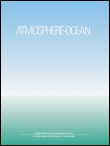
ATMOSPHERE-OCEAN
Innovating Research at the Intersection of Air and SeaATMOSPHERE-OCEAN is a premier peer-reviewed journal published by Taylor & Francis Ltd, dedicated to advancing the fields of atmospheric science and oceanography. Since its inception in 1963, this journal has served as a crucial platform for researchers, professionals, and students, facilitating the dissemination of significant findings and innovative methodologies in understanding the complex interactions between the atmosphere and the ocean. With its journal ranking in the Q3 category for Atmospheric Science and Q2 for Oceanography as of 2023, along with its Scopus rankings, ATMOSPHERE-OCEAN maintains its relevance by addressing current topics such as climate change, hydrology, and ocean circulation patterns. For those seeking to contribute to or stay informed about the latest research in these critical fields, ATMOSPHERE-OCEAN is an invaluable resource that combines rigorous scholarship with practical implications for environmental management and policy.
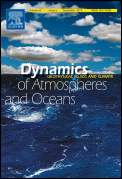
DYNAMICS OF ATMOSPHERES AND OCEANS
Navigating the Complexities of Earth's SystemsDYNAMICS OF ATMOSPHERES AND OCEANS, published by Elsevier, is a renowned journal that has established itself as a vital resource in the fields of atmospheric science, oceanography, and geology. With a rich publication history stretching from 1976 to 2024, this journal provides a platform for high-quality research that addresses the complex interactions between the atmosphere and oceans, which are critical to understanding climate change and environmental systems. It enjoys a respectable impact factor and a reputable position within its category quartiles, specifically noted as Q2 in critical domains such as Computers in Earth Sciences and Oceanography. Researchers and professionals benefit from its indexed coverage, featuring a Scopus ranking that places it among the leading journals in its categories. Although it is not an open-access journal, readers can access its cutting-edge articles through institutional subscriptions or individual purchases. The journal aims to foster cross-disciplinary dialogue and innovation by publishing original research, reviews, and insightful commentary, making it a cornerstone for scholars, students, and practitioners committed to advancing knowledge in the dynamic interplay of Earth's atmospheric and oceanic systems.
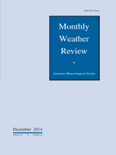
MONTHLY WEATHER REVIEW
Charting the Course of Weather ResearchMONTHLY WEATHER REVIEW, published by the American Meteorological Society, is a leading journal in the field of atmospheric science, recognized for its rigorous peer-reviewed articles that contribute significantly to the understanding of weather patterns and climate systems. With an impressive Q1 ranking in the 2023 category quartiles and a strong standing (#41 out of 148) in the Earth and Planetary Sciences Scopus rankings, the journal serves as an essential resource for researchers, professionals, and students alike. Although it does not currently offer open access, its comprehensive coverage of meteorological research spanning from 1960 to 2024 makes it invaluable for those seeking to stay at the forefront of developments in weather analysis and prediction. Situated in Boston, Massachusetts, this journal not only showcases pioneering research but also emphasizes the importance of collaborative efforts in the meteorological community, ultimately contributing to advancements in our understanding of atmospheric phenomena.
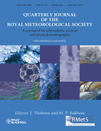
QUARTERLY JOURNAL OF THE ROYAL METEOROLOGICAL SOCIETY
Championing significant contributions to planetary sciences.The Quarterly Journal of the Royal Meteorological Society, published by Wiley, stands as a prestigious platform in the field of Atmospheric Science, with a commendable impact reflected in its Q1 quartile ranking and a notable Scopus rank of 4th out of 148, placing it in the 97th percentile among its peers. With origins tracing back to 1873, this journal has established itself as a cornerstone for disseminating high-quality research, engaging articles, and innovative methodologies that advance our understanding of meteorological phenomena. Although it is not an open-access journal, the rigorous peer-review process ensures that only the most significant contributions are published, making it essential reading for researchers, professionals, and students dedicated to atmospheric and planetary sciences. For those interested in cutting-edge findings and comprehensive reviews, the Quarterly Journal of the Royal Meteorological Society is an invaluable resource in enhancing scientific knowledge and collaboration in this dynamic and evolving field.

JOURNAL OF THE METEOROLOGICAL SOCIETY OF JAPAN
Championing Open Access to Meteorological ResearchJournal of the Meteorological Society of Japan, ISSN 0026-1165 (E-ISSN 2186-9057), is a leading academic journal published by the Meteorological Society of Japan, dedicated to advancing the field of atmospheric sciences. Established in 1905, the journal has a long-standing tradition of publishing high-quality research that contributes to our understanding of meteorology, climatology, and environmental science. As an Open Access journal since 2018, it ensures wide dissemination of knowledge, allowing researchers, professionals, and students to access cutting-edge studies without barriers. With an impressive impact factor and ranked in the Q1 category in Atmospheric Science, it is recognized for its significant contributions, currently holding a Scopus rank of #36 out of 148 in the field. The journal serves as a vital resource for those involved in meteorological research, policy-making, and education, fostering collaboration and innovation within and beyond Japan.
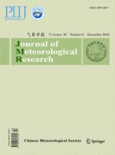
Journal of Meteorological Research
Bridging Knowledge in Meteorology and Ocean Engineering.The Journal of Meteorological Research, published by SPRINGER HEIDELBERG, stands as a vital resource in the fields of Atmospheric Science and Ocean Engineering, boasting an impressive impact factor that reflects its scholarly significance. With its ISSN 2095-6037 and E-ISSN 2198-0934, the journal offers an open access platform, fostering accessibility and dissemination of cutting-edge research. Established in 2014 and running through to 2024, it is particularly distinguished in 2023 as Q2 in Atmospheric Science and Q1 in Ocean Engineering, underscoring its important contributions to these disciplines, with remarkable rankings in Scopus that place it in the top tiers of both categories. The journal accepts a broad range of research articles, reviews, and innovative methodologies, catering to a diverse audience of researchers, professionals, and students eager to advance their knowledge and expertise in meteorological studies. This makes the Journal of Meteorological Research an essential platform for anyone engaged in understanding and addressing the complex challenges of our changing climate.
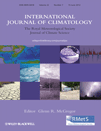
INTERNATIONAL JOURNAL OF CLIMATOLOGY
Exploring the complexities of climate change and variability.INTERNATIONAL JOURNAL OF CLIMATOLOGY, published by WILEY, is a leading peer-reviewed journal dedicated to advancing our understanding of climate science. As a prominent periodical within the Q2 category of Atmospheric Science, it encompasses a wide range of topics related to climatology, including climate variability, modeling, and impacts of climate change, making it an essential resource for researchers, professionals, and students in the field. With a history of publication spanning from 1989 to 2024, the journal has established a strong reputation for disseminating high-quality research that informs policy and practice. Though it does not offer Open Access options, its articles are accessible to a broad audience through institutional subscriptions, ensuring that significant findings can reach those who need them most. The INTERNATIONAL JOURNAL OF CLIMATOLOGY plays a crucial role in connecting academia with pressing environmental issues, thus fostering dialogue and innovation in climate research.

Tropical Cyclone Research and Review
Navigating the Challenges of Cyclone DynamicsTropical Cyclone Research and Review is a leading open-access journal dedicated to advancing the understanding of tropical cyclones and their impacts on the environment, society, and economies. Published by KEAI PUBLISHING LTD since 2012, this journal presents a platform for high-quality research and insightful reviews in the fields of atmospheric science, earth sciences, and safety research. With established quartile rankings, including Q1 in Modeling and Simulation and Safety Research, and a significant presence in various scientific rankings such as the Scopus Ranks, the journal is increasingly recognized for its contributions to these critical areas of study. It is particularly valuable for researchers, professionals, and students engaged in the complexities of tropical meteorology and disaster management. Based in China, Tropical Cyclone Research and Review aims to foster academic collaboration and disseminate knowledge that addresses the challenges posed by tropical cyclones, ensuring accessibility to all through its open-access model.

Journal of Southern Hemisphere Earth Systems Science
Unveiling Insights into Southern Hemisphere Environmental Dynamics.The Journal of Southern Hemisphere Earth Systems Science, published by CSIRO PUBLISHING, stands as a pivotal resource for researchers and professionals in the fields of Atmospheric Science, Global and Planetary Change, and Oceanography. Established in 2016 and operating under an Open Access model since 2019, this journal provides a platform for innovative research and critical discourse on earth systems in the Southern Hemisphere. It has achieved impressive rankings with a Q1 classification across key disciplines and is recognized in Scopus with significant percentile rankings, showcasing its influence and relevance within the scientific community. The journal is dedicated to fostering scholarship that addresses the complex interactions of earth systems, offering valuable insights for those engaged in environmental science and sustainability initiatives. Its commitment to facilitating open access resources makes it an invaluable tool for researchers and students alike, striving to enhance our understanding of global environmental changes.